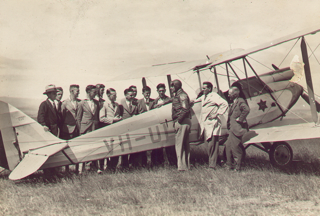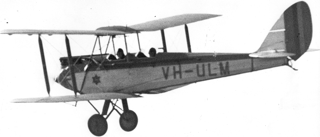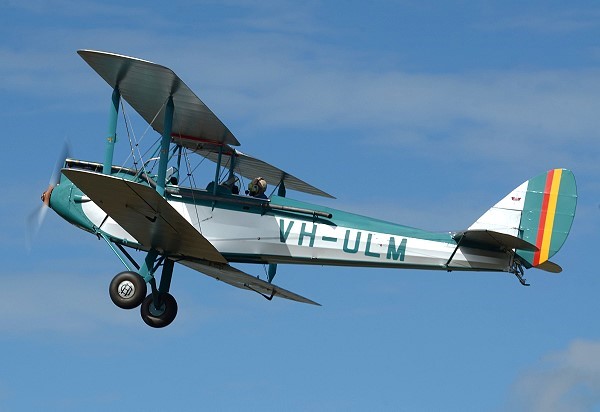VH-ULM Timeline
Built in the England by De Havilland at Stag Lane, Middlesex in August 1929, Serial No 1403
One of several planes purchased by the Department of Defence for allocation to Aero Clubs to undertake pilot training.
Two Gipsy Moths VH-ULM & VH-ULN were shipped to Tasmania for the Tasmanian Section of the Australian Aero Club to use for pilot training.

VH-ULM was the first to be assembled and flew for the first time by the pilot Captain Joe Francis. The first aircraft to fly for the Aero Club and the first aircraft to fly from the new Western Junction Aerodrome.

The plane was purchased by the Tasmanian Aero Club from the Department of Defence.

The Aero club had used six Gipsy Moths in this period. VH-ULM was the only plane to fly with the Aero Club for its first 10 years. VH-ULM had flown over 2,500 hours (out of the total 10,500 hours flown by the Aero Club).
Aero Club ceases operations at the outbreak of the Second World War, its three planes, including VH-ULM, were placed in storage at Cambridge in 1940.
In 1944, VH-ULM was sold to the Royal Victorian Aero Club for pilot training.
In 1945 it was sold by the Victorian Aero Club (and replaced by the newer ex-War Tiger Moths).
The plane had about 12 different private owners and had about 5 different colour schemes.
Purchased by Joe Drage and joined his collection of vintage and historic aircraft at Wodonga, Victoria.
In 1985, the collection was moved to Wangaratta at “Drage Airworld”. VH-ULM was the oldest plane in the collection and was placed upon static display.
Drage Airworld was closed, and the planes sold. VH-ULM was purchased by Brisbane Neurosurgeon, Pilot, Vintage Aircraft owner and aviation enthusiast, Michael Redmond.
Over teh next 10 years, a full restoration was undertaken, and the plane was painted in the original Tasmanian Aero Club Colours.

The plane flew for the first time in 26 years, piloted by Bert Persson.
The plane is still in flying condition and is based in Queensland.
